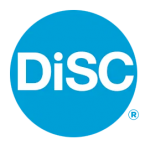
Do you have any tips for how to lead a meeting? I’ve just been promoted and am about to start running our big weekly meetings. I’m feeling very nervous about it!
Your instinct to be concerned about running the weekly meeting is understandable. Meetings can be boring and ineffective, especially when they have a lot of people in them. They also are a reflection of you, the leader, and can either help or hinder the important work your team needs to get done.
I find that teams seem to fall into one extreme or another by having either too many meetings that are redundant, unfocused and clog up calendars, or too few so no one is communicating. There’s also a lot of bad meeting behavior out there—meetings that start late, run over, have unclear agendas, have the wrong people attending and run amuck with conversations that go rogue. Bad meetings lose people’s attention, the point, and the momentum to get things done with collaboration. Here are ways to learn how to do it well.
1. Always go in with a plan.
Running a good meeting takes forethought, skill and strategy, so don’t take it lightly. First, think of the meeting’s goal and what you are trying to accomplish. Here are the three overall objectives to focus your meetings around:
- Communication. Meetings are an opportunity for people to communicate and hear what everyone is working on. It’s a time for updates on projects, planning, timelines and objectives. It’s also a time for discussion and problem solving if needed. The meeting is where everyone gets to talk and voice their opinions.
- Accountability. Meetings are a time to check in on progress and deadlines. It’s a way to hold everyone accountable to what they said they were going to do. Meetings keep projects and people in motion.
- Projections. Meetings are a great time to be proactive and look toward the future to troubleshoot, strategize and brainstorm ideas on how to get ahead. Many meetings leave out this essential piece and only focus on task lists, but I think this part is vital. Getting ahead in business is always about being proactive.
Every week before your meeting, have clarity on what you want to achieve and how you would gauge whether it’s a success or failure. This will help you hold yourself accountable as the leader so you can continuously improve on how you organize and run it.
2. Manage the different personalities in the room.
The biggest roadblock to an effective meeting is the people in it. People are complicated because they differ in their thinking and personalities, which can create conflicting dynamics. The easiest way to understand and navigate people is to group them into two categories: externalizers and internalizers.
Externalizers are active personalities that like to talk out their thinking. They externalize their thoughts and emotions as they are happening. These people enjoy lively conversation, active problem solving and brainstorming sessions. They are more likely to address issues in the moment and react. They tend not to be fans of group think. Instead, they like to challenge the norms and people’s ideas, prompting them to argue for what they think is the best possible outcome. They are good at keeping an eye on the big picture and coming up with a lot of ideas and solutions.
While externalizers are great for creating momentum and pushing everyone to think differently, they can become a problem when they dominate conversation (not leaving room for others to contribute); become disruptive (taking discussions off track); and derail agendas (focusing on out-of-scope ideas or projects). These people also have a tendency to start and end meetings late.
Internalizers are passive personalities who like to think before they speak. They do most of their talking in their heads. They don’t like to speak off the cuff, and would rather be accurate or at least think things through before launching into topics. For this reason, they come prepared and well-researched to discuss issues as they feel this drives better results. They also tend to be passive personalities who like to go along with the group. They don’t like disruption and feel it shuts down collaboration. They do not interrupt people and sometimes prefer to not talk at all and instead sit back and listen.
While internalizers can be helpful for creating a calm and stable environment, it becomes unproductive if they are not giving their opinion at the meeting, but instead speaking up afterwards on the side—creating the meeting-after-the-meeting effect. They can also get too stuck on the agenda and not allow for open discussion or the ability to challenge the norms.
Managing different personalities is a lot about being able to productively manage conflict. Ideally, we want meetings where all ideas are put forth, thinking is challenged, different voices are heard, and facts and accuracy are considered.
Most importantly, do not demonize one type of person either because they are different than you or the group, or because they make you uncomfortable. The worst meetings are ones where everyone is the same—either shouting over each other or agreeing because they are afraid of disruption. Diversity in thinking is what creates the most stimulating conversations and best ideas.
To run a great meeting, remember the goals and overall objectives and then manage those personalities to productive outcomes. And always make sure to start and end on time!
This article originally appeared on marieclaire.com.










